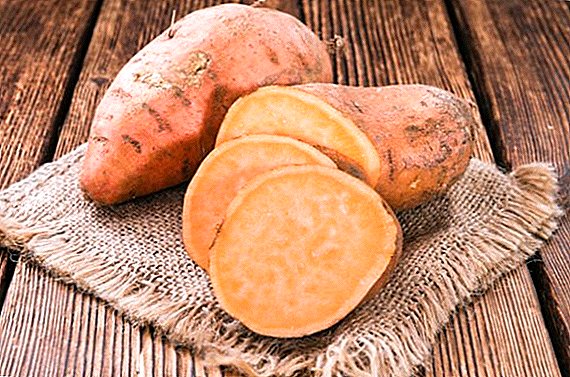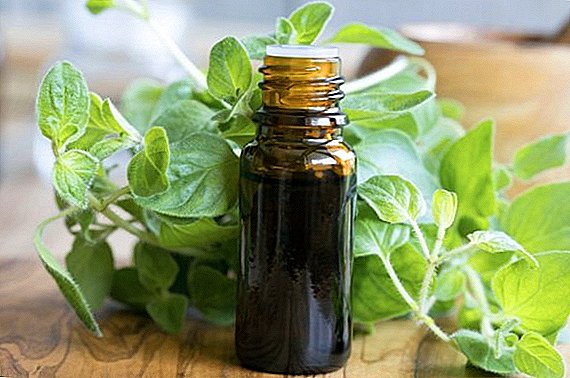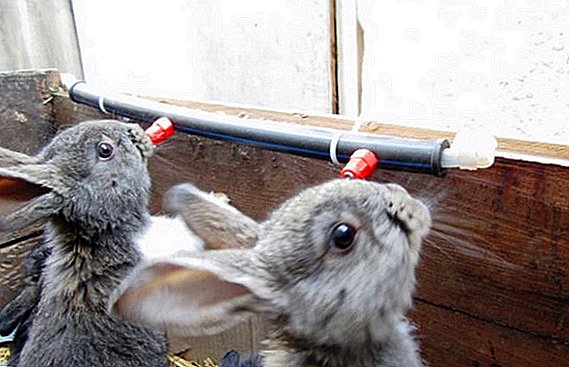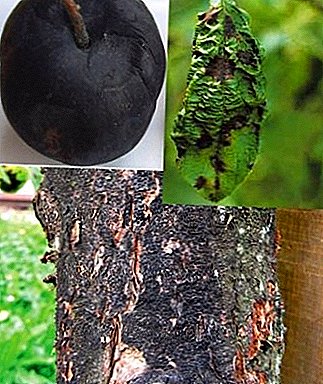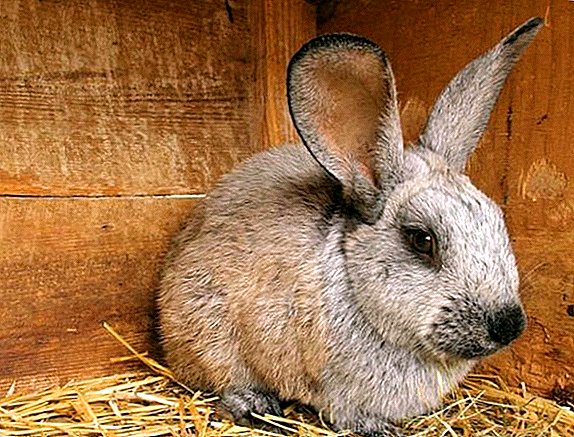 For rabbits, as well as for most animals, infectious diseases are dangerous. Most of them are not treated or their treatment is not economically feasible. Therefore, in order to preserve the health of pets, it is important to know the signs of diseases, to carry out preventive measures, and in case of infection, to take timely measures.
For rabbits, as well as for most animals, infectious diseases are dangerous. Most of them are not treated or their treatment is not economically feasible. Therefore, in order to preserve the health of pets, it is important to know the signs of diseases, to carry out preventive measures, and in case of infection, to take timely measures.
What is this disease
Staphylococcus is an infectious disease in which the death for livestock can be 70%. For the disease is characterized by the development of inflammatory processes, accompanied by the occurrence of pustular lesions.
Factors affecting infection:
- non-observance of sanitary standards for keeping animals (lack of disinfection of rabbit animals and cages, high density of rabbits, poor ventilation of the room);
- lack of preventive vaccines against infectious diseases;
- non-compliance with quarantine measures for new animals.
The most susceptible to infection of the rabbit at the time of akrol, young and weakened individuals. A staphylococcus in the body begins to multiply, releasing toxins, as a result of which an inflammatory process occurs in the cocci area. Together with the bloodstream, microorganisms are spread through the internal organs, creating new foci of infection.
We advise you to get acquainted with the methods of treatment and prevention of diseases of rabbits, as well as learn what eye, skin and ear diseases can affect the body of the rabbit.
The causative agent and sources of infection of staphylococcus
Small microorganisms cause the disease - Staphylococcus pyogenes aureus, Staphylococcus pyogenes albus, Staphylococcus tpidermidis. Cocci are distinguished by the degree of parasitization and activity, highlighting 19 species of these microorganisms.  Staphylococci were first described by R. Koch in 1878, and in 1881 they were found in rabbits and described by another Dr. G. Zemmer. The source of infection can be a person or a sick animal. The microorganism is transmitted by airborne droplets, as well as along with mucus, pus and feces.
Staphylococci were first described by R. Koch in 1878, and in 1881 they were found in rabbits and described by another Dr. G. Zemmer. The source of infection can be a person or a sick animal. The microorganism is transmitted by airborne droplets, as well as along with mucus, pus and feces.
In the wild, staphylococci can be anywhere - in the dust, in the air. Infection of the rabbit occurs in violation of the integrity of the skin - wound, scratch, natoptysh, as well as the defeat of the mucous membranes.
Important! Staphylococci are very sensitive to penicillin antibiotics. But at the same time they quickly get used to them, which leads to a decrease in the response to the drug administration.
Forms and symptoms of the disease
The term "staphylococcus" itself describes a group of diseases:
- septicopyemia - damage to the skin of newborn rabbits;
- roaming pyemia - toxin poisoning of the body;
- septicemia - blood sepsis;
- purulent mastitis.

Staphylococcosis can affect rabbits regardless of age. Both wild and domestic animals are equally affected. The clinical manifestations of the disease can be very different. But the basis for all diseases is the presence of ulcers.
Septicopyemia (pyoderma)
Cocci that develop in the mammary gland of a lactating rabbit enter the body of a rabbit along with milk. Infection is manifested by small abscesses on the skin of babies. A few days later these rabbits die.
Did you know? The first bearers of veterinary knowledge were the shepherds, it was they who daily looked after the animals and gave them help. But the first doctors for animals - hippiatry appeared only in ancient Greece in the 4th century AD.
Wandering (stray) pyemia
 The epithet "wandering" in the name of the disease characterizes the way the rabbit's body is damaged by cocci - the movement of microorganisms along with the blood flow to new, unaffected areas.
The epithet "wandering" in the name of the disease characterizes the way the rabbit's body is damaged by cocci - the movement of microorganisms along with the blood flow to new, unaffected areas.
At the location of streptococci inflammation occurs. The immune system tries to block the lesion, as a result of which there is an accumulation of pus (abscess). After 1-3 months, the abscess opens, intoxication of the organism occurs and, possibly, death of the animal.
Septicemia
Septicemia develops when the pathogen enters the blood. As a result, rapid intoxication of the body develops, accompanied by an increase in body temperature of up to +41 ° C, rapid breathing, and depression of the rabbit. The death of the rabbit occurs in 1-2 days.
Purulent mastitis
Rabbits with a small amount of milk or milk stagnation in the glands due to a small number of rabbits are prone to mastitis. Purulent mastitis is a lesion of the mammary gland of a rabbit with streptococci.
Did you know? The discovery of the therapeutic properties of penicillin society is obliged laboratory white mice. But for many other living organisms, it is toxic. And in rabbits can cause diarrhea.
Purulent mastitis can develop in two ways:
- in a little dairy rabbit, due to the prokus of the mammary gland in the rabbit, the causative agent of the disease can enter the body;
- Staphylococcus enters the gland with a bloodstream from another infected organ.
 Rabbit mastitis
Rabbit mastitisDiagnosis of staphylococcosis
To diagnose staphylococcus disease, the presence of multiple ulcers on the skin or mucous membranes is sufficient.
Therefore, the diagnosis is considered in 2 ways:
- in live rabbits - with the help of external examination and biochemical analyzes of blood, urine, contents of ulcers;
- when opening the rabbit, multiple lesions of the internal organs are observed.
Diagnosis is difficult only if the organs of the gastrointestinal tract are affected. In this case, external ulcers are absent.
Important! Eating infected rabbit meat cannot be eaten either by humans or animals, even after careful cooking.
How to treat sick rabbits
Sick animal must be isolated from other pets. In the rabbit spend disinfection. A sick rabbit must be shown to a veterinarian. The prescribed course of treatment and dosage of drugs must be observed very precisely, because rabbits are sensitive to overdose of antibiotics.  Drug treatment includes a mandatory course of antibiotics. The rabbit can be given penicillin every 4-6 hours intramuscularly. The dosage of the drug - 15000 IU per 1 kg of body weight. Abscesses visible on the skin are opened, pus is removed.
Drug treatment includes a mandatory course of antibiotics. The rabbit can be given penicillin every 4-6 hours intramuscularly. The dosage of the drug - 15000 IU per 1 kg of body weight. Abscesses visible on the skin are opened, pus is removed.
The wound is treated with carbolic acid 3% or iodine 2 times a day. A 5% solution of pioctanin is also applied to the wound. This drug is an antiseptic and is used for various skin lesions. If the rabbit has a lesion of the mammary gland, milk should be decanted regularly, the gland should be treated with penicillin or ichthyol ointment 3 times a day.
It will be useful for you to read about why the rabbit has watery eyes, what to do if the rabbit sneezes, grunts and breathes heavily, as well as how and what to treat the cold of rabbits.
Prevention
Among the prevention measures can be identified a group of specific and general preventive measures. So, if the livestock is prone to mastitis, then the females must be inoculated inoculated with staphylococcal toxoid.
Common measures include:
- Compliance with the schedule of mandatory vaccinations, including against infectious diseases; vaccination against staphylococci is carried out by formol vaccine;
- strict adherence to a monthly quarantine for all new rabbits and animals after vaccination;
- timely treatment of any wounds and abrasions with an antiseptic;
- regular inspection of pets - pay special attention to the nose and paws;
- exclusion from the cage of sharp objects, which can injure the animal;
- regular disinfection of rabbit;
- good airing rabbit.

With the observance of all preventive measures and compliance with sanitary standards for keeping rabbits, you can be sure that the risk of morbidity is reduced several times.
Learn how to increase immunity in rabbits, as well as what vitamins to give to rabbits.
And the cost of prevention will be much cheaper than the treatment and possible death of pets.




